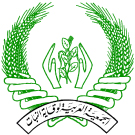Economic Important Plant fungal Diseases in the Arab Countries

Xylella fastidiosa
07/17/2018
Status of Host Plant Resistance to Insect Pests in the Arab World
07/17/2018Plant disease caused by fungi are considered amongst the most important factors of considerable losses to different agricultural crops in the Arab region. These diseases spread in all countries and all year around, but more devastating during spring where moderate temperatures and high humidity prevail. These diseases cause, when suitable conditions are available, and highly susceptible hosts are grown, devastation. These diseases affect industrial crops such as cotton which is badly affected by both Verticillium and Fusarium wilts; Sugarbeet which is borne to infection by Cercosporiosis and crown wart disease (Urophlyctisleproides)which negatively affect the produce and sugar industry; food crops such as wheats which are badly affected by rusts (Pucciniastriiformis, P. triticina& P. graministritici), smuts (TilletiaandUstilago) and leaf spots (Septoria&Helminthosporium) and food legumes (faba bean, beans, chickpeas and lentis) which are affected by Ascochyta blights (Ascochtaspp.), chocolate spot and gery mold (Botryotiniafuckeliana و B. cinerea), Fusarium wilts (Fusariumoxysporum ) and broomrapes (Orobanche spp.). Fruit trees (both pome and stone) are borne to infection by fungal diseases such as scab, brown rot, leaf curl, powdery mildews and witches’ broom that affect their productivity, fruit quality marketable value and hamper their storage. Vegetable crops are infected by destructive diseases, especially those grown under plastic houses such as downy and powdery mildews, Early and late blights and wilt.
Integrated disease management is considered the best way to reduce losses. Host plant resistance and the use of resistant/tolerant varieties the best safe and environmentally friendly means to combat these diseases. Resistant varieties to Ascochyta blight and wilt have been developed in food legume crops, and to yellow and leaf rusts in wheats, as well as resistant/tolerant varieties versus some dangerous diseases infecting vegetable crops. The use of chemical control is hindered by its high costs and lack of necessary technical data for its optimum use, regardless its harmful effects on the environment and wild life. Biological control is still in its enfancy.





